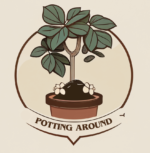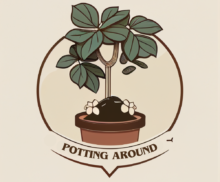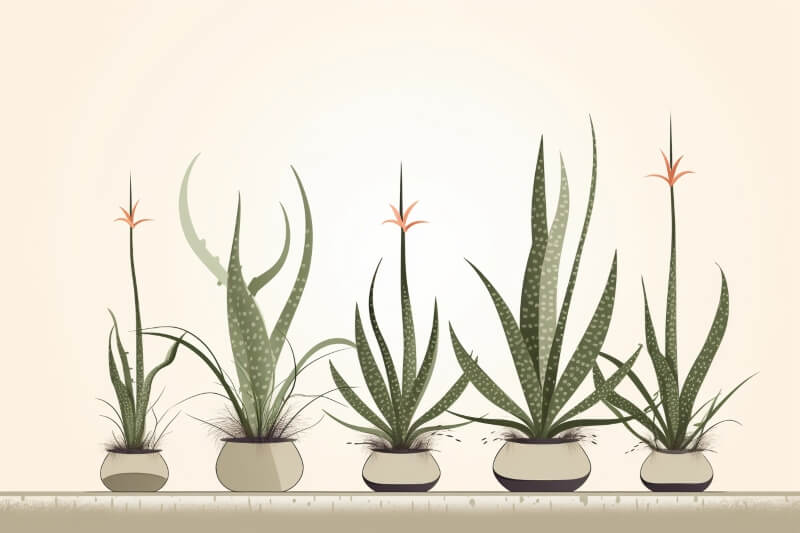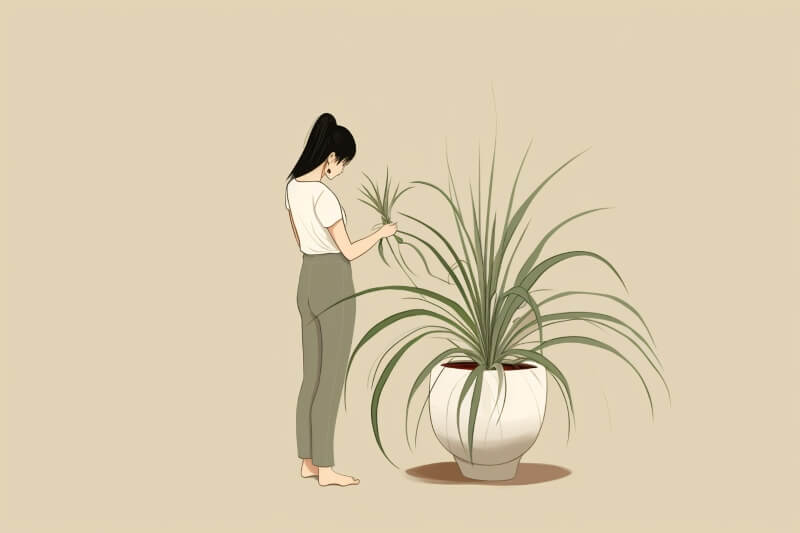Aloe vera, or Aloe Barbadensis, is a popular plant to have around the house. It’s not only beautiful, but it is also a useful plant, known for its medical benefits. Aloe vera are easy to grow: they are very forgiving, even you forget them for a few weeks, making it the perfect plant for beginner gardeners or anyone who doesn’t want to commit to a frequent watering schedule.
Aloe vera plants do however require a lot of light to thrive. They will grow big and relatively fast if they receive at least 6-8 hours of direct sunlight every day. For that reason, aloe do best near a southern window where they will receive a good amount of sunlight.
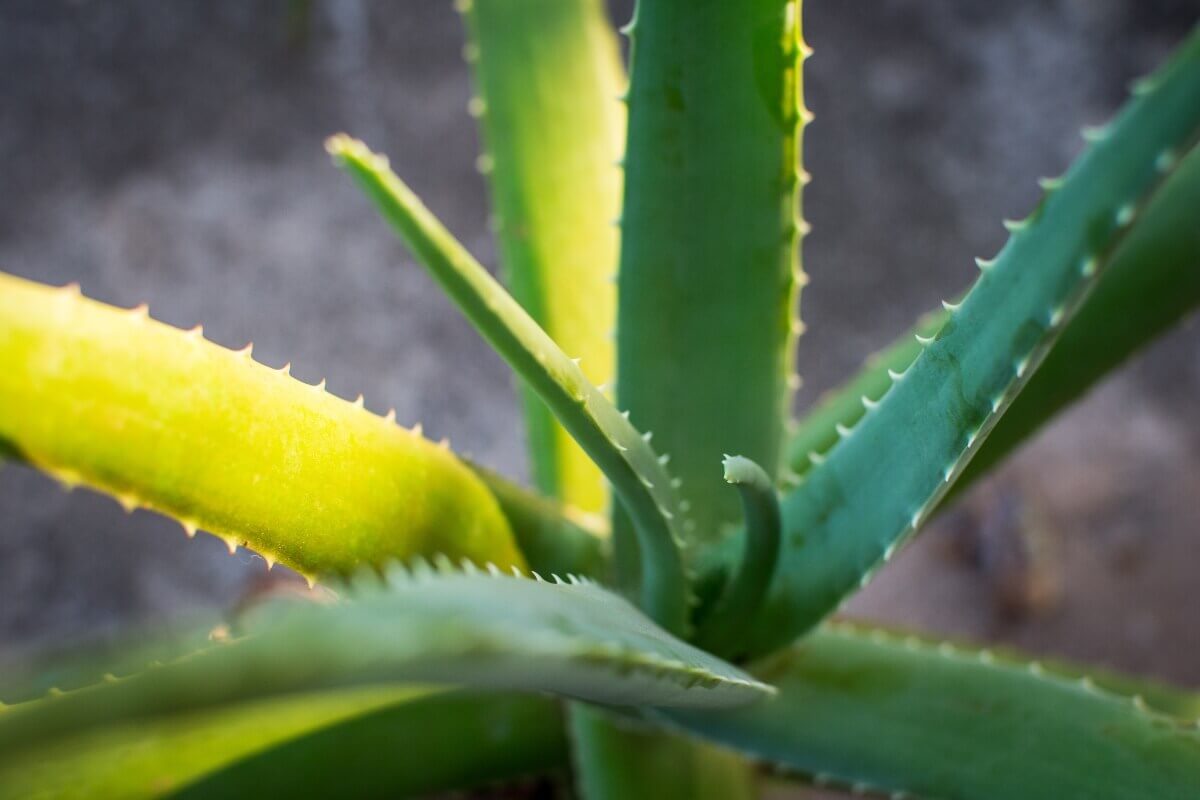
A healthy aloe vera will normally grow upright and have thick, sturdy leaves. However, the outer leaves can sometimes crease or bend, causing your aloe vera to look droopy. Flopping aloe vera leaves can happen for a multitude of reasons, ranging from watering habits, to lack of drainage, pests, stress or a sudden change of temperature.
So, if you noticed that your aloe leaves start bending, look back at your care routine to identify any recent watering or environmental change that could have caused stress to your plant.
In this article, we’ll review some of common reasons why your aloe vera and what to do about it:
In this article:
Reasons why your aloe vera leaves are bending:
1. Inadequate sunlight
Inadequate sunlight is probably the most common cause for a wilted aloe vera. Aloe vera is native to North Africa, Southern Europe and the Canary Islands, and is grown primarily in tropical climates. This means that it will require a lot of sunshine to thrive, otherwise its leaves will weaken and start to drop.
If your aloe bottom leaves start creasing and bending, move your plant to a brighter area, preferentially right next to a southern window, where it will get a decent amount of light.
If your plant has been sitting in the shade for an extended period of time, you will first need to acclimate your plant to bright sunlight gradually (just like you wouldn’t expose your skin to the sun without protection!) Otherwise, the leaves might turn a light brown or red which indicates sun damage.
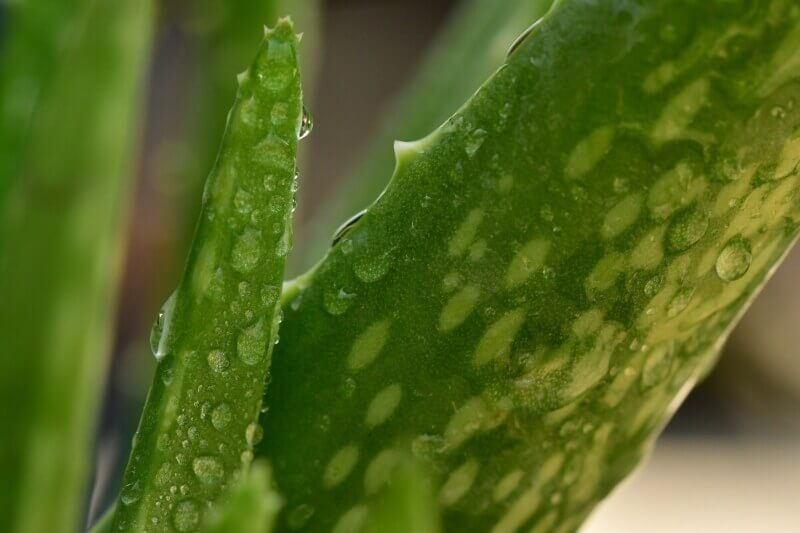
2. Watering habits
The second most common culprit for bending aloe vera leaves is overwatering. This succulent-type plant is accustomed to arid environments, and so it requires deep but infrequent watering. Refrain sticking to a regular watering schedule and instead allow the soil to dry out between watering. Generally speaking, water your aloe plant every 2-3 weeks during the hot months and even more sparingly in Autumn and Winter. The general rule of thumb for watering during the cold months is to double the amount of time between watering (as compared to your summer watering schedule). Underwatering, although less common, can also cause stress to the plant and cause your aloe leaves to thin out and bend.
3. Inadequate soil mix/lack of drainage
A lack of drainage can also be responsible for a droopy aloe plant, particularly if it’s been overwatered. Ensure that your plant is planted in well-drained soil, such as cacti soil, and that there is a drainage hole at the bottom of the pot. This will allow the soil to dry out between watering and keep the plant healthy.
4. Temperature change
Another reason why aloe vera leaves can starting bending is a sudden change of temperature. The plant can go into shock if they are suddenly moved from one temperature to the other.
Aloe vera plant do best in temperature between 55 and 80°F (13 and 27°C). The temperature of our homes or apartments will therefore be ideal for them. You can bring it outside between May and September but remember to take it inside at night when temperature drops below 50-degree Fahrenheit (10°).
In any case, always gradually introduce the plant to a new environment to eliminate any risk of shock to the system.
5. Stress
If your aloe plant leaves start bending a few days or weeks after you bought it, it might be due to the conditions in which it was stored. It’s possible that it was overwatered or underwatered, or that it was sitting on a shelf without any light or drainage before you bought. This is likely to have weakened the plant over time and it might not recover from the stress.
Similarly, aloe vera plant do best when they are slightly crammed in their pot. Repotting in a container that is too large for the plant, or without adequate potting mix, is likely to cause transplant stress and prevent it from rooting in the new environment.
Ensure you choose a pot that’s an appropriate size (usually one size bigger than the previous one) and be carefully to repot the plant in a similar potting mix.
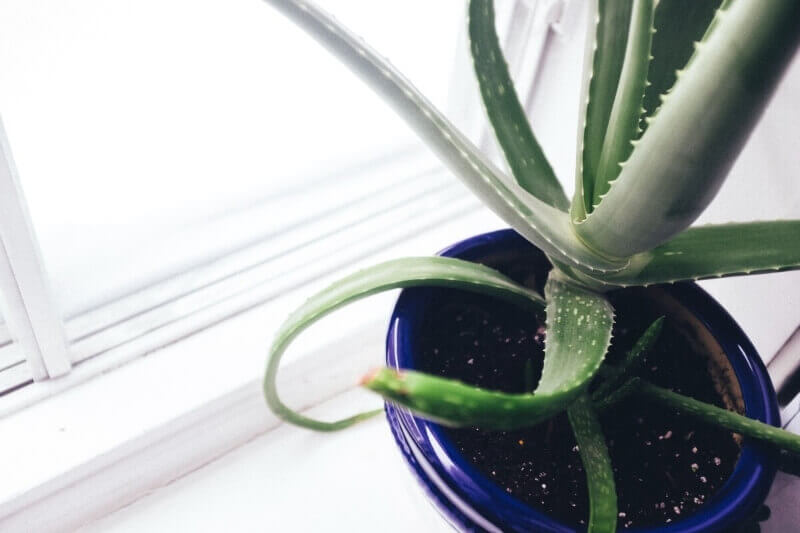
How to fix an aloe vera with droopy leaves?
Fixing your drooping aloe leaves will depend on what’s causing the issue in the first place.
Start by examining the roots and the soil. If the soil is humid and the aloe leaves look mushy, then it’s likely caused by an overwatering issue. Take the aloe out the pot and remove any excel soil around the roots. Check for any sign root rot and remove unhealthy roots if any. Repot the aloe vera in a new pot, using well-drained soil.
If the soil is dry, then consider any recent changes to the plant and its environment. Have you moved the plant to a new location? Did you leave it outside overnight? Does it receive the adequate amount of light? You’ll have to be a bit of a detective in order to diagnose the cause and bring your aloe back to its perky look.
Should I cut off drooping aloe vera leaves?
Unfortunately, once aloe vera leaves are creased or bent, they won’t stand back up again. This doesn’t cause any harm or issue to the plant but it can look unsightly. You can remove any severely weakened leaves by removing any that’s to weak to stand and leave the remaining leaves at the center.
For that, cut back the outer drooping aloe vera leaves to the base using a clean knife. Do not trim down leaves to half way as they do not regrow from the wound. Cutting back your plant will encourage new growth and the plant will be able to recover.
What to do with a bent aloe vera leaf?
While bent aloe vera leaves won’t grow back once cut, there are still different uses that you can make out of them.
For instance, you can use the cuttings to harvest gel from the leaves. Aloe vera gel can be used as a moisturiser to help sooth and hydrate dry skin, for sunburn relief, hair conditioner, acne treatment or to speed up wound healing and reduce inflammation.
You can also try propagate these leaves to start a new plant. Aloe vera are generally propagated from separating offsets (or pups) rather than from cuttings, but this might still be worth a try, particularly if you like to experiment with propagation. For that, let the cut leaf dry for a few days until it has calloused over. This will help prevent the leaf from rotting when you plant it. Once it has calloused over, plant the leaf in a well-draining mix, cut end down. Water the soil lighlty and place the pot in a bright, warm spot with indirect sunlight.
In conclusion, whilst aloe vera aren’t fussy plants, they can still experience issues like bent leaves. While this may be a sign of environmental stress or inadequate watering habit or potting mix, it’s typically not a cause for concern as long as you take the necessary steps to support your plant and ensure it’s growing in optimal conditions.
By monitoring your aloe’s growth and addressing any issues promptly, you can help keep it healthy and thriving for years to come.
